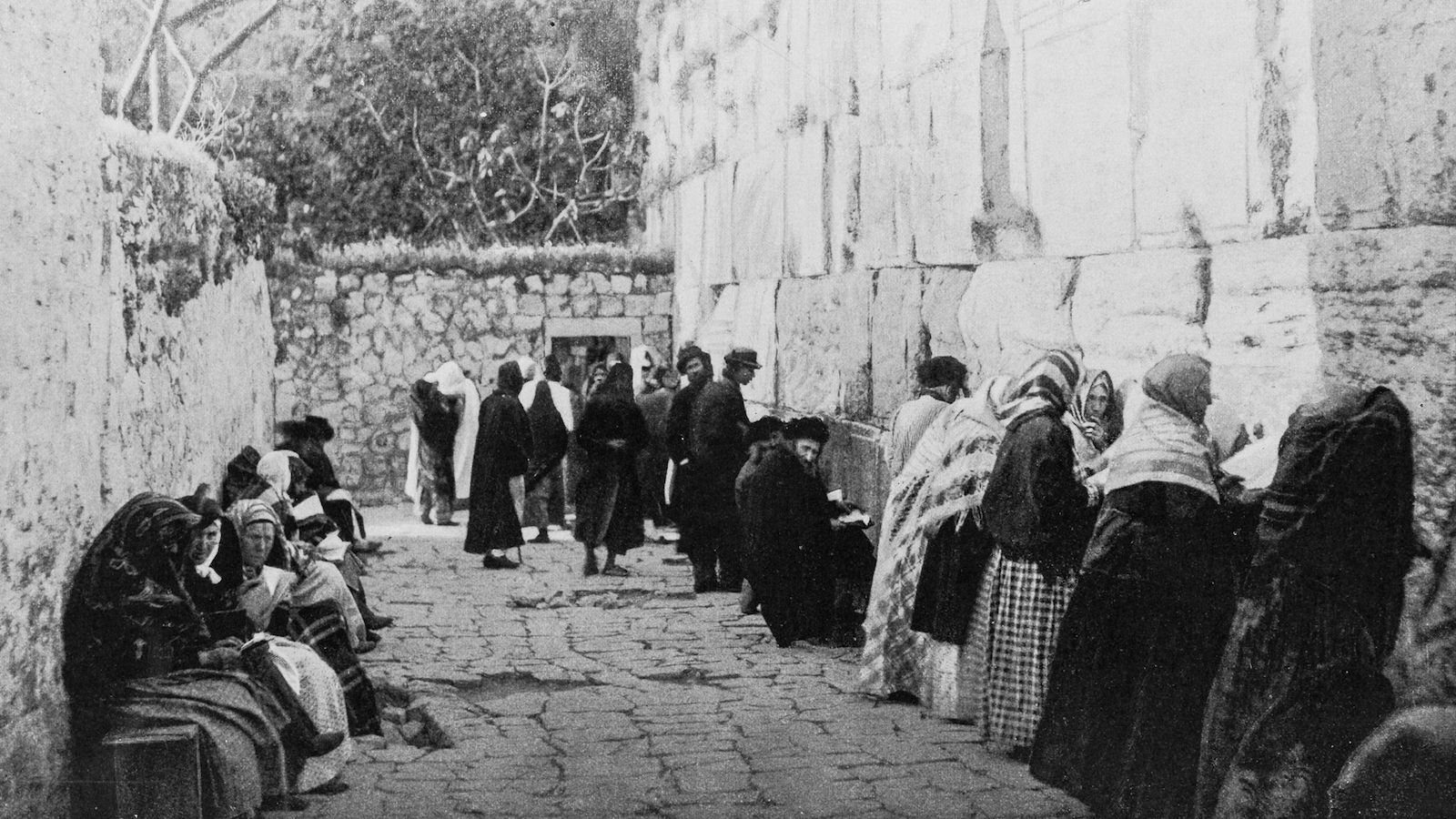In 70 CE, the Second Temple in Jerusalem was destroyed by the Roman Empire, effectively ending Jewish rule in the Land of Israel until 1948. While the Jewish population was not given a decree to leave the land, the conditions, such as the fiscus Judaicus, a special tax imposed on Jews, were grave enough to convince most residents to disperse around the globe.
A Small Community Remains
Still, some Jews did remain in Palestine. Bar Kochba led a small band of Jews in a revolt against the Romans from 132-135 CE in response to the building of the new Roman city “Aelia Capitolina” on the grounds of Jerusalem. While the revolt was met with violent and harsh retributions, by the end of the century, the Romans officially permitted Judaism as a sanctioned religion in Palestine.
When the Christian Byzantines took control of Palestine in the fourth century, many restrictions were put on the remaining Jewish community, from banning intermarriage between Christians and Jews to forbidding Jews from owning Christian slaves. There was talk of banning Judaism outright, but those plans never came to fruition.
Despite its smaller pool of scholars, the rabbinic academies of Palestine were able to complete what is known today as the Yerushalmi (Jerusalem Talmud). Though the Babylonian Talmud is considered to be the more authoritative work, the Jerusalem Talmud is still one of the most important contributions to Jewish literature.

Help us keep Jewish knowledge accessible to millions of people around the world.
Your donation to My Jewish Learning fuels endless journeys of Jewish discovery. With your help, My Jewish Learning can continue to provide nonstop opportunities for learning, connection and growth.
Life Under Muslim Rule
In 638, Caliph Omar conquered Jerusalem from the Byzantines, launching Muslim rule over the territory. While Jews and Christians were considered second class citizens, the amount of direct persecution decreased substantially.
The community in Palestine was fairly quiet during the early Islamic period. A rabbinic academy was formed in Tiberius (and later moved to Ramle) in order to compete, unsuccessfully, with the ten Jewish academies in Baghdad.
Christian Rule: More of the Same
In 1099, Crusaders arrived in Palestine and created a Christian kingdom in Jerusalem that lasted until 1187. The Crusaders banned Jews from living in the city of Jerusalem, though they were permitted to live in the rest of Palestine, and were permitted to visit Jerusalem.
But Christian rule was short-lived. In 1187, Saladin and the Ayyubid dynasty conquered Jerusalem. Indeed, while Christian Europe wanted to establish a permanent presence in Jerusalem and the Middle East, they eventually retreated to Europe after the Muslim recapture of Acre in 1291.
In 1258, Baghdad fell to the Mongols. Fearing a collapse of their empire and wanting to prove their strength, the Muslim rulers imposed harsh sanctions on Jews and Christians throughout the region, including Palestine. These restrictions–including wearing special clothing and doctors not being allowed to serve Muslim patients–were enumerated in the seventh century Pact of Umar, a list of laws concerning non-Muslims living in Muslim lands that had previously rarely been enforced.
The Ottoman Rule: New Opportunities for the Jewish Community
The Ottoman Empire conquered Palestine in 1517 and held it until the empire’s decline at the end of World War I. The Ottomans, though practicing Muslims, were much less harsh on the Jewish community than previous Islamic empires and actually allowed them to thrive. The Jewish population in Palestine had exploded in the previous decades with the influx of Spanish and Portuguese Jews who had been expelled during the Inquisition. The Jewish communities in Jerusalem, Tiberias, Gaza, Hebron, Acre, and Safed greatly increased in number during this period.
In Safed, Rabbi Isaac Luria revolutionized Jewish mystical thought and established Safed as the center of Kabbalistic study. Also in Safed, Luria’s follower, Joseph Caro, wrote the Shulchan Arukh, which remains the most influential Jewish legal code to this day.
In 1798, Napoleon invaded Egypt. Though he never captured Palestine, the European influence on the Middle East did have positive effects on the Jewish community. A number of reforms in the 19th century led to more rights for Jews, with full citizenship being granted to them (along with all others in the Empire) in 1876.
By the end of the century, after an increase in anti-Semitic incidents in Eastern Europe, Jews started moving to Palestine with the hope of one day creating a Jewish homeland there. This was the beginning of the modern Zionist movement that officially became an organized body with the first World Zionist Congress which was held in Basel, Switzerland in 1897. By 1909, Jewish settlers had founded Tel Aviv, the first all-Jewish city in modern Palestine.
By the end of the World War I, the British had taken control of Palestine as part of the Sykes-Picot Agreement with France in their partition of the soon non-existent Ottoman Empire. This would not be the last political change in Palestine. Conflicts between the Arab population and the growing Jewish population would, in the coming decades, alter the face of the Middle East.



